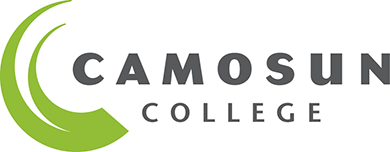Canadian paddlers carried a piece of Camosun across the finish at the London Games
Archived Content
This archived web page remains online for reference, research or record-keeping purposes. This page will not be altered or updated and may contain out of date information. If you’re looking for specific information and haven’t found it, please contact communications@camosun.ca.
August 16, 2012
Silver medalist Adam Van Koeverdon and bronze medalist Mark Oldershaw were among a contingent of Canadian athletes to use a sophisticated, compact piece of technology invented at Camosun College's Sport Innovation Centre (SPIN) to help them train for and compete at the London Olympics. The device, known as MMS (multi sport measurement system) was commissioned by the Own the Podium movement in 2010 to help athletes and coaches track, analyze and refine motion and activity to enhance performance.
"The MMS device is a natural extension of SPIN's work with sensors, motion capture and technical garment integration," says Dr. Tim Walzak, Director of Camosun's Centre for Applied Research and Innovation. "By integrating our understanding of sensor technologies and bio-mechanics, we were able to provide Own the Podium with a solution to their focused and visionary mandate to improve Canadian athletic performance."
The MMS was refined, tested and benchmarked until it unit exhibited the degree of accuracy required by Own the Podium, and was suitable for Canada's elite athletes' rigorous training regimes.
"Our SPIN applied research team members, from PhD engineers to students in the early stages of their education, were all elated and proud to see our collaborative MMS efforts featured prominently in all the media coverage of Canadian paddlers," says Walzak.
How it works
The MMS software offers real-time data collection and transmission, and post-training analysis and feedback. The real-time view presents focused, clean, and easy-to-understand graphical and numerical information to the coach thereby enhancing the training experience. The post-training analysis mode adds fully synchronized video along to the graphical and numerical data. In the post-training mode a session can be played in real-time, viewed in slow-motion or analyzed frame-by-frame, forward or in reverse. These two modes combine to provide incisive and effective training opportunities. Training sessions become periods for progressive improvement based on reliable data capture, reinforcement of correct technique and effecting more efficient power production.
What's next for sport innovation?
Walzak isn't able to disclose many details of current and future projects, but MMS refinements will likely be among the exciting developments, making it more powerful, lighter and adaptable well beyond its current use in athletics, rowing, canoeing and kayaking.
Last updated: May 31, 2021 1:19 pm


